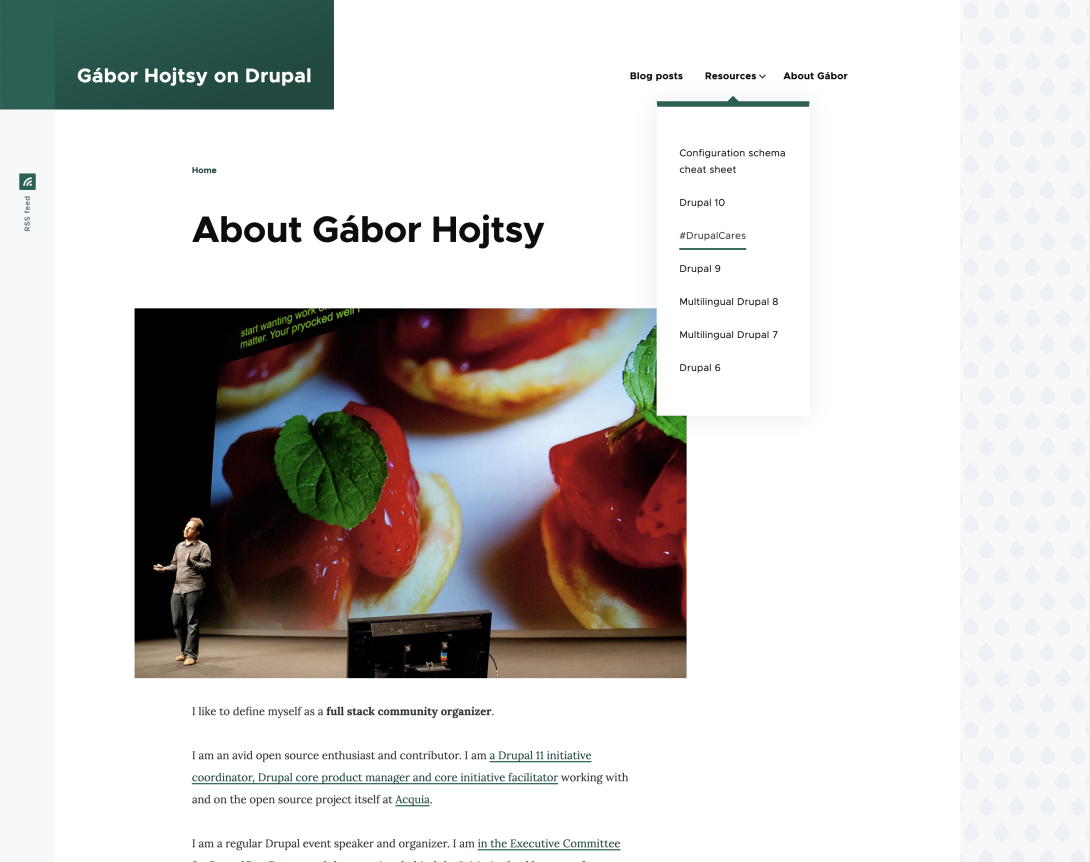After 16 years, I was back in Brussels for another FOSDEM last weekend. Back then, as the lead maintainer, I presented about the brand new Drupal 6 version. Now I revisited the pieces that made the Drupal 8 Multilingual Initiative super successful (dedicated post about that coming soon). That reminded me how much I used this website and other custom websites to support initiatives I worked on, and how I neglected to take care of the site in recent years. I wanted to move a bit forward, and kind of got carried away in the best way possible.
Yesterday I sat down to update to the latest Drupal 7 initially, so I can update the underlying PHP setup to 8.2. That was the whole scope, which would give me some time to figure out what to do about the site. I used Acquia Cloud IDE on my Acquia subscription, which made it super easy to get the new Drupal version, update the codebase and push to the repository. When all looked well on the Cloud IDE, I updated the production environment as well immediately, using Acquia's Cloud UI.
Once I was there, I admit I was in the zone of going the whole route and not stopping halfway. So I went to try to use Acquia Migrate: Accelerate (AM:A). Despite the name, it is now an open source tool that you can use locally to dramatically speed up your migrations as well. Wim Leers wrote posts in outstanding detail announcing the open sourcing of Acquia Migrate Accelerate and a lot of technical details later on.
While a more complete Drupal 10 compatible version is in the works, I was fine with updating to Drupal 9 with the existing version and then doing the composer updates to Drupal 10. What I tell people about Acquia Migrate: Accelerate is that it is primarily the best way to find the errors on your existing site. But it is also an amazing way to help you process your migrations. I would not have known otherwise how to do it this fast, even for a simple blog like mine. And I would not have had the confidence that it all went well without the errors I got first and the reassurances later that I resolved the errors. AM:A applies numerous patches to Drupal 9 and some contributed modules to help make the migrations even more smooth.

I did multiple cycles of going back to fix errors on my source site. When I fixed all I could, I considered 98.56% good enough, the errors it found were from modules long gone from my site. Then all was needed was to undo those patches from composer.json and update contributed projects. I verified how that went with another amazing open source module Upgrade Status, which was super useful to guide me all the way updating my custom site specific module, removing incompatible but unneeded modules and updating the ones I needed.
The Drupal 9 to 10 update went even faster than the AMA migration from Drupal 7 to 9. So here it is, all my content saved on the latest and greatest version of Drupal. I took the opportunity to refresh my about page and got started on making the resources I posted throughout the years easier to access from the menu. Now that I am on the latest and greatest, there is more planned to come. Soon, I plan to post more about where Drupal 11 is, and a detailed post about the content of my FOSDEM session.
